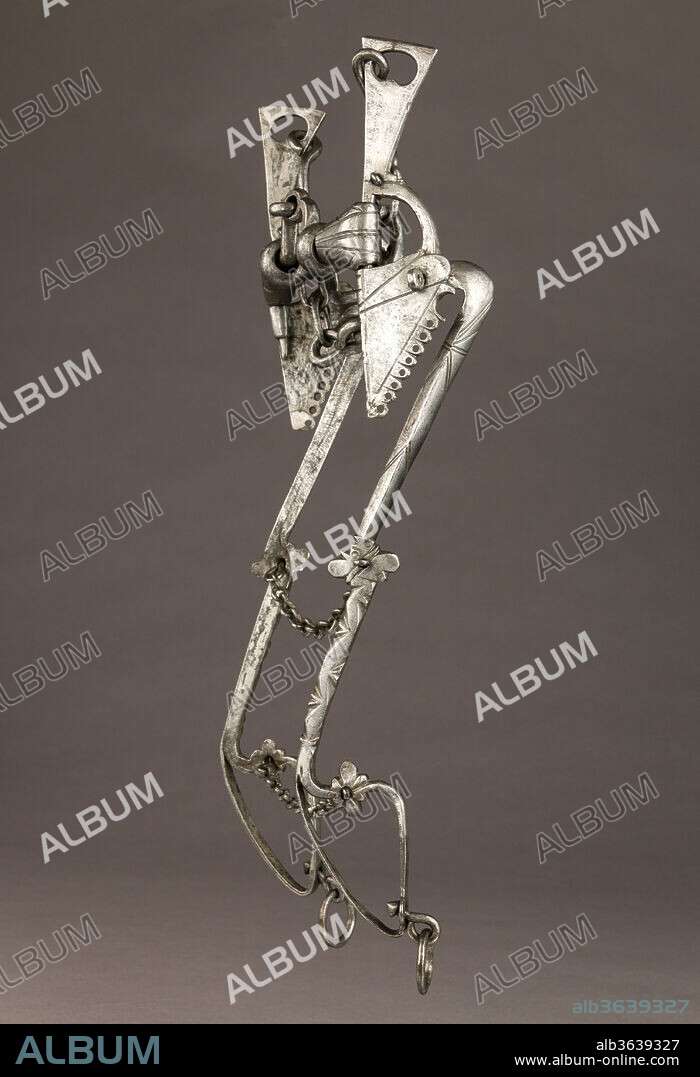alb3639327
Curb Bit

|
Ajouter à une autre Lightbox |
|
Ajouter à une autre Lightbox |



Avez-vous déjà un compte? S'identifier
Vous n'avez pas de compte ? S'inscrire
Acheter cette image

Titre:
Curb Bit
Légende:
Voir la traduction automatique
Curb Bit. Culture: German. Dimensions: H. 18 in. (45.7 cm); W. 7 in. (17.8 cm); Wt. 3 lb. 1.4 oz. (1400.5 g). Date: 17th century.
According to contemporary equestrian manuals, this was a bit designed for large horses with a hard mouth, a thick tongue, thin lips and non-sensitive bars (part of the horses' jaw without teeth). The gooseneck canons of the mouthpiece were meant to give more freedom to the tongue. The banquets, the parts of the cheekpieces where the mouthpiece is attached, can be opened to switch out the mouthpiece -- a feature particularly appreciated on dressage bits in Germany.
If the very long shanks look impressive, and would logically add more leverage effect, and so more strength, they would actually have been blocked at some point by the horse's chest, reducing their impact. Curb bits were also at this time used with a very light hand, the well-trained horses responding by anticipation to the slightest move of the reins. This bit was very likely used for horse training and dressage.
Technique/matériel:
Iron alloy, tin
Musée:
Metropolitan Museum of Art, New York, USA
Crédit:
Album / Metropolitan Museum of Art, NY
Autorisations:
Modèle: Non - Propriété: Non
Questions sur les droits?
Questions sur les droits?
Taille de l'image:
3007 x 4400 px | 37.9 MB
Taille d'impression:
25.5 x 37.3 cm | 10.0 x 14.7 in (300 dpi)
Mots clés:
 Pinterest
Pinterest Twitter
Twitter Facebook
Facebook Copier le lien
Copier le lien Email
Email
